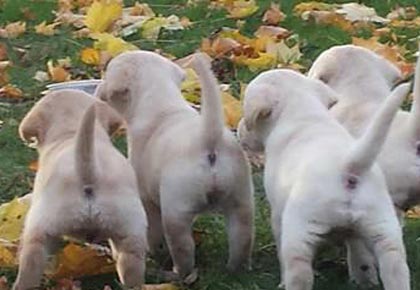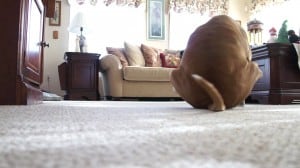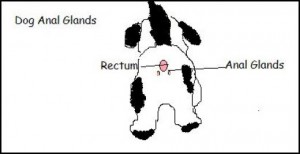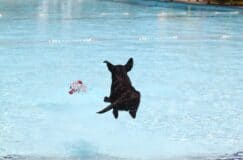Why do Dogs Scoot their Butts?
Dog Butt Scooting! Why!!
Have you ever witnessed your dog dragging his tush along your clean Persian rug and thought, “why????” and “Nooo!!!!” all at the same time??
Before you assume that they’re trying to embarrass you… there are actually a couple common reasons for this behavior.
Anal Gland Woes
Anal glands are on either side of a dog’s anus at the 4 and 8 o’clock positions. These sacs secrete a fluid that contains that individual dog’s scent. This is why dogs greet each other by sniffing each other’s butts! (Aha!) Each time the dog passes a bowel movement, it puts pressure on these glands which expresses them naturally. Sometimes, however, these glands can become impacted and cause irritation. This can be because of a blockage or possible infection and lead to excessive licking around the rectum or dragging the bottom across the floor, grass, etc. In this case, they need to be manually expressed. You can take your dog to the vet for them to do this, or they can show you how to do it yourself at home (gross, I know). If they do have an infection, they may need an antibiotic as well. Increasing dietary fiber may also help prevent this problem in the future. Surgery is sometimes needed if the problem becomes chronic.
A Sore or Dirty Bum
Another cause of butt dragging is fecal debris around the rectum. This can often happen after a bout with diarrhea and can lead to discomfort and irritation for your fur child. The best solution for this is to keep the tush clean and trim any hair that tends to trap fecal matter.
Worms
The less common cause of the infamous bum scoot are tapeworms (Eek!). Dogs contract tapeworms by swallowing infested fleas. Typically you will catch this by seeing small white segments hanging from your dog’s rectum. If you suspect your dog has tapeworms, a simple vet visit and medication will clear it up.
 Your pooch will thank you for getting to the bottom of this for them…
Your pooch will thank you for getting to the bottom of this for them…
no ifs, and’s, or butts about it!
😉
For more tips on caring for your Labrador, check out these EML Blog Posts!
Hip Dysplasia in Labradors: What Can I Do to Prevent it?
Hip Dysplasia: Treatment Options










44 Comments